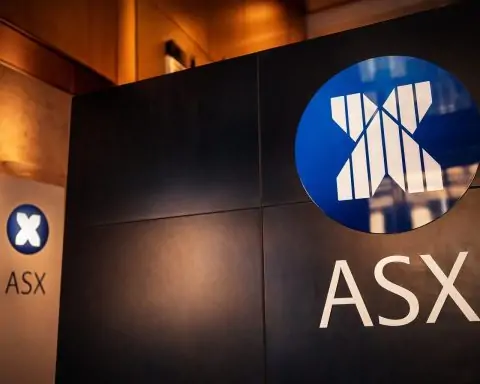Key Takeaways
- VOO is modestly higher today: Around mid‑afternoon on Friday, November 14, 2025, Vanguard S&P 500 ETF (NYSEARCA: VOO) was trading near $619.8, up about 0.3% on the day after an early drop. [1]
- Volatility remains elevated: The ETF is stabilizing after Thursday’s 1.6% slide, part of a broader S&P 500 selloff driven by AI-stock worries and fading hopes for a near‑term Federal Reserve rate cut. [2]
- Tech and AI still in the driver’s seat: VOO’s largest positions—including Nvidia, Microsoft, Apple, Amazon and Meta—have been at the center of this week’s AI‑related volatility, but several turned higher this afternoon, helping the ETF bounce. [3]
- Flows and fundamentals remain strong: Despite short‑term turbulence, VOO has pulled in tens of billions in new money this year and sits near record assets of roughly $800 billion, with a low 0.03% expense ratio and mid‑teens year‑to‑date gain depending on the data provider. [4]
Note: All intraday prices and performance figures are as of roughly 2:45 p.m. ET on November 14, 2025 and may change by the market close.
VOO Stock Snapshot on November 14, 2025
As of early afternoon on Friday, Vanguard S&P 500 ETF (VOO) was quoted around $619.8 per share, up roughly 0.30% versus Thursday’s close near $618. [5]
Key intraday stats:
- Last price: about $619.8–$619.9
- Day change: roughly +0.3%
- Intraday range: approximately $609.8 (low) to $621.2 (high) [6]
- Volume: just under 6 million shares traded by mid‑afternoon, in line with recent activity. [7]
- 52‑week range: about $440 to $634, putting today’s price only a bit more than 2% below the 52‑week high. [8]
- Assets under management: roughly $800 billion as of late October / early Q4. [9]
Data providers differ slightly on performance, but:
- TipRanks puts VOO’s 5‑day gain around +0.7% and year‑to‑date return near +17.6%, as of early Friday. [10]
- Webull lists year‑to‑date performance around +14%, reflecting different calculation cutoffs. [11]
The bottom line: despite a rough week, VOO remains solidly positive in 2025 and still trades close to record territory.
Why VOO Is Whipsawing: AI Selloff, Fed Doubts and a Risk‑Off Swing
1. A brutal Thursday set the stage
Yesterday (Thursday, November 13), Wall Street logged one of its worst days in months:
- The S&P 500 fell about 1.7%, the Dow dropped roughly 1.7% (nearly 800 points), and the tech‑heavy Nasdaq slid more than 2%. [12]
- A big chunk of the damage came from AI and semiconductor leaders, especially Nvidia, which sank sharply and dragged broader indexes lower. [13]
Because VOO tracks the S&P 500, it moved almost in lockstep, dropping about 1.6% on Thursday—its worst single day in months, according to several daily trackers. [14]
2. Friday morning: futures slump and pre‑market pain
The selling initially carried into Friday:
- U.S. stock futures pointed lower, with the S&P 500 hovering near 6,720 in early trade and ETF benchmarks like SPY and QQQ in the red. [15]
- An Invezz‑flagged note pointed out that the S&P 500 and ETFs such as VOO and SPY had “wavered in the past few days” as investors reassessed the AI boom and trimmed risk. [16]
24/7 Wall St.’s live blog captured the mood, highlighting that VOO was down roughly 1% in pre‑market trading, extending Thursday’s decline and putting the ETF on course for a “big weekly loss” if the selloff stuck. [17]
3. Rate‑cut expectations reset — and hit growth stocks
At the same time, the Federal Reserve narrative shifted:
- A string of Fed officials sounded more hawkish, warning that inflation progress isn’t guaranteed and signaling caution about additional rate cuts. [18]
- Futures markets now assign only about a 51% chance of a December rate cut, down from around 70% last week, according to Barchart’s summary. [19]
Higher‑for‑longer rates are bad news for high‑multiple growth and AI names, whose valuations depend on distant future cash flows. Unsurprisingly, articles from Investors Business Daily and others describe a mini “AI bubble” shake‑out that has erased roughly $1.8 trillion in AI‑linked market value and pushed more than 70% of AI stocks into correction territory. [20]
Given that VOO’s largest holding is Nvidia, with nearly 8% weight, and it owns heavy stakes in Microsoft, Apple, Amazon, Meta, Broadcom and Tesla, the ETF is deeply exposed to any AI‑driven sentiment swings. [21]
4. Midday reversal: tech steadies, VOO turns green
By late morning and early afternoon, the story changed:
- The S&P 500 opened down roughly 1.1–1.3%, then clawed all the way back to trade around 0.1–0.4% higher, according to AP, MarketWatch and The Guardian. [22]
- A Yahoo Finance live blog described the session as “Dow slips, Nasdaq and S&P 500 rebound” amid growing doubts about the Fed’s rate‑cut path. [23]
- AP noted that Nvidia opened with a loss of more than 3% but reversed to a gain of about 1.1%, pulling the broader market up with it. [24]
Forbes and other outlets reported that by Friday afternoon, Apple, Microsoft, Broadcom, Palantir and other key tech names had turned positive, further easing pressure on major indexes. [25]
24/7 Wall St.’s real‑time VOO coverage echoed this shift, noting that “stocks have bounced back after their sharp pre‑market selloff… The VOO is currently up 0.25% for the day,” a figure consistent with the ~0.3% intraday gain seen on Webull and StockAnalysis. [26]
Result: Instead of another deep red day, VOO recovered into modest green territory, even as the Dow remained lower and volatility stayed elevated.
Inside VOO: Mega‑Cap Tech Still Dominates
VOO remains a pure S&P 500 index tracker, but the S&P 500 itself has become highly concentrated. As of September 30, 2025, StockAnalysis lists the ETF’s top holdings as: [27]
- Nvidia (NVDA) – 7.95%
- Microsoft (MSFT) – 6.72%
- Apple (AAPL) – 6.60%
- Amazon (AMZN) – 3.72%
- Meta Platforms (META) – 2.78%
- Broadcom (AVGO) – 2.71%
- Alphabet (GOOGL/GOOG) – 4.46% combined
- Tesla (TSLA) – 2.18%
- Berkshire Hathaway (BRK.B) – 1.61%
- JPMorgan Chase (JPM) – 1.46%
Together, the top 10 names account for nearly 39% of VOO’s portfolio, while the ETF holds 507 stocks in total. [28]
This concentration explains why:
- A sharp AI and chip stock selloff (Nvidia, Broadcom, AMD, etc.) can hit VOO harder than its “plain vanilla” label might imply. [29]
- Conversely, any rebound in mega‑cap tech, like today’s intraday turn higher in Nvidia, Apple and Microsoft, can quickly lift VOO back into positive territory. [30]
Fundamentally, StockAnalysis currently pegs VOO’s portfolio P/E ratio around 27, underscoring the elevated valuations investors are now debating. [31]
Flows and Fundamentals: Investors Still Love VOO
Short‑term price swings aside, money continues to pour into VOO:
- ETF research firm ETFGI reports that the U.S. ETF industry hit a record $13.08 trillion in assets at the end of October 2025, with October alone seeing a record $186.2 billion of net inflows. [32]
- Within that, Vanguard S&P 500 ETF (VOO) took in about $17.7 billion in October, the single largest net inflow of any U.S. ETF that month and pushing its assets close to $800 billion. [33]
On the fund design side:
- VOO is a passively managed large‑blend ETF that seeks to replicate the S&P 500 Total Return Index. [34]
- Multiple sources, including Zacks and Vanguard’s own disclosures, list its expense ratio at 0.03%, making it one of the cheapest broad‑market U.S. equity ETFs available. [35]
Analysts at Zacks and other outlets continue to highlight VOO and its S&P 500 peers as core, long‑term building blocks for portfolios, even as they acknowledge current valuation risks. [36]
“Buffett Rules” and Today’s Volatility: How Commentators See VOO
A widely circulated Zacks piece published this morning connects Warren Buffett’s final shareholder letter to ETF investors, specifically calling out SPY and VOO as vehicles that can reward patient, long‑term buyers: [37]
- Buffett reminds investors that big drawdowns—50% or more—have happened several times over decades, yet broad U.S. markets ultimately recovered.
- The article argues that S&P 500 ETFs like VOO are designed for exactly that kind of multi‑decade compounding, and that “panic selling” during downturns is often more damaging than the drawdown itself.
Meanwhile, a separate Seeking Alpha note (referenced on StockAnalysis) points out that: [38]
- The S&P 500’s price‑to‑earnings ratio is near record highs, fueling talk of a bubble.
- But profit margins are also near record levels, suggesting that while stocks are not cheap, the market isn’t purely running on hype.
Combine that with ETFGI’s flow data, and the picture that emerges is two‑sided:
- Short term: Markets are on edge, especially around AI leaders and interest‑rate policy, which is exactly what VOO owns the most of. [39]
- Long term: Investors are still using VOO as a core holding, adding billions during pullbacks and leaning on its low fees, broad diversification and long track record.
What to Watch Next for VOO
1. Nvidia earnings on November 19
The single biggest near‑term event for VOO may be Nvidia’s upcoming earnings report:
- Nvidia is due to report fiscal Q3 2026 earnings on November 19, and Morningstar notes that the stock’s valuation and AI growth narrative will be under intense scrutiny. [40]
- With NVDA now roughly 8% of VOO, any large move—up or down—could noticeably impact the ETF. [41]
2. Inflation data, employment and Fed communications
Markets are laser‑focused on incoming macro data:
- Economic Times and Barchart both emphasize that upcoming inflation releases, payrolls data and further Fed speeches will likely determine whether the market re‑prices rate‑cut expectations even further out or regains confidence in a gentle easing path. [42]
- Each time the rate‑cut odds move, long‑duration assets like big‑tech and AI—core components of VOO—tend to react quickly.
3. Sentiment around the “AI bubble”
From Asia to the U.S., today’s coverage is dominated by questions about a potential AI bubble:
- FastBull describes Asian markets sliding as they tracked Wall Street’s AI selloff, highlighting concerns that some AI high‑flyers may have run too far too fast. [43]
- Investors Business Daily estimates that the AI shake‑out has erased around $1.8 trillion in market value across AI‑linked names. [44]
For VOO holders, that means:
- Short‑term volatility is likely to stay elevated as the market toggles between euphoria and fear over AI.
- But because VOO owns hundreds of other companies—from healthcare to financials, consumer staples and energy—the ETF still offers broad diversification beyond AI alone. [45]
Is VOO Still a Core ETF After This Week’s Selloff?
Many commentators say yes, with caveats:
- Long‑term oriented outlets like Motley Fool continue to include VOO among a short list of Vanguard ETFs to “buy with $100 and hold forever,” stressing its broad exposure and rock‑bottom fees. [46]
- Zacks’ “Should VOO Be on Your Investing Radar?” frames the fund as a low‑cost, large‑cap blend ETF that can anchor a portfolio, while noting that valuation and concentration risk are real issues to monitor. [47]
However, this week has also underlined that:
- VOO is not a “safe” cash substitute. It can and does fall quickly when mega‑cap tech and AI stocks sell off. [48]
- Investors concerned about drawdowns may pair VOO with more defensive ETFs (bonds, value, low‑volatility or dividend strategies)—a point echoed in the Buffett‑themed Zacks article, which highlights products like MINT, VTV, SPHQ and SPHD as potential stabilizers. [49]
As always, this article is for informational purposes only and does not constitute financial advice. Decisions about buying, holding or selling VOO (or any other security) depend on your individual goals, time horizon and risk tolerance. Consider speaking with a licensed financial professional before making major portfolio changes.
References
1. stockanalysis.com, 2. www.reuters.com, 3. stockanalysis.com, 4. etfgi.com, 5. stockanalysis.com, 6. www.webull.com, 7. www.webull.com, 8. www.webull.com, 9. etfgi.com, 10. www.tipranks.com, 11. www.webull.com, 12. finance.yahoo.com, 13. www.reuters.com, 14. www.tipranks.com, 15. m.economictimes.com, 16. stockinvest.us, 17. 247wallst.com, 18. www.nasdaq.com, 19. www.nasdaq.com, 20. www.investors.com, 21. stockanalysis.com, 22. www.wral.com, 23. finance.yahoo.com, 24. apnews.com, 25. www.forbes.com, 26. 247wallst.com, 27. stockanalysis.com, 28. stockanalysis.com, 29. www.reuters.com, 30. apnews.com, 31. stockanalysis.com, 32. etfgi.com, 33. etfgi.com, 34. stockanalysis.com, 35. adobe-sandbox.zacks.com, 36. finviz.com, 37. finviz.com, 38. stockanalysis.com, 39. www.nasdaq.com, 40. www.morningstar.com, 41. stockanalysis.com, 42. m.economictimes.com, 43. www.fastbull.com, 44. www.investors.com, 45. stockanalysis.com, 46. finviz.com, 47. adobe-sandbox.zacks.com, 48. www.reuters.com, 49. finviz.com







